Sign Shop Profile: Hope Neon
by all | 27 October 2014 11:21 am
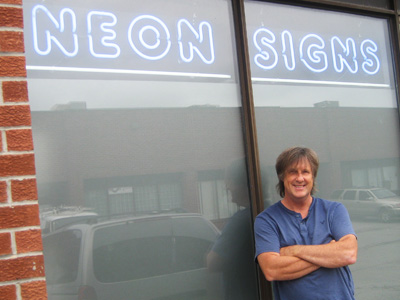 [1]By Peter Saunders
[1]By Peter Saunders
On September 17, El Mocambo co-owner Sam Grosso confirmed the nearly 70-year-old concert venue on Spadina Avenue in downtown Toronto would be closing on November 6. The ‘for sale’ sign had been up for months and a conditional deal was finally being worked out with an unspecified buyer. It could mean the end of an era for a venue known not only for its run of shows by Bob Marley, April Wine, The Rolling Stones (performing as The Cockroaches in 1977), Jimi Hendrix, The Ramones, Billy Idol, Elvis Costello, Blondie and U2, but especially for its iconic neon palm tree sign, unless it is preserved and/or incorporated into the reworked building.
The last shop to work on that sign was Hope Neon, back in 2012 when Grosso and Marco Petrucci bought the venue from Abbas Jahangiri and the neon needed refurbishing. It was restored at a reported cost of $20,000.
Grant Farrell, the current owner of Hope Neon, has successfully found a niche for his trade in Toronto handling these sorts of projects—not just restorations, but also making entirely new, customized, exposed ‘skeletal’ neon signs for local restaurants, bars and nightclubs, including Grosso’s popular rockabilly venue, the Cadillac Lounge, on the increasingly illuminated stretch of Toronto’s Queen Street West that includes the neighbourhood of Parkdale. Frequently dubbed ‘West Queen West,’ the area was recently named the second hippest district in the world by Vogue magazine, behind only Shimokitazawa in Tokyo, Japan.
“With the rise of West Queen West, most of my recent work has been for venues along that stretch,” says Farrell.
Indeed, one might say neon is hip all over again.
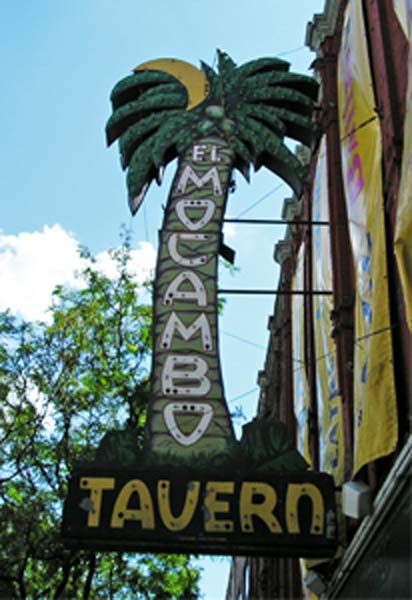 [2]Building a competitive advantage
[2]Building a competitive advantage
Glass bender Rudy Hope founded his eponymous shop on Toronto’s Maitland Avenue in 1958, when exposed neon was a mainstream medium for signage. He had previously made glass tubes for the federal government that were used in radar systems during the Second World War.
There were still many neon tube benders like Hope working throughout Toronto when Farrell joined the industry in 1983 by delivering supplies to sign shops.
“I had a musical background and the artistic side of neon signs had a similar feeling of fun that attracted me,” Farrell says. “There was still high demand back then, but many of the neon shops in Toronto were old and not very customer-service-oriented, so I saw a business opportunity. I asked them to hire me and they kept saying no, no, no. I was even willing to work for free!”
By this point, Hope Neon was operating out of Steel Art Signs’ facilities in the east end of the city, where Farrell would often deliver supplies.
“Rudy was renting a space there and started thinking about selling his business,”
says Farrell. “I offered to work for free for one year to learn the trade and then take it over. He said okay. I was only about 20 years old and had to ask my parents to get a lawyer to write up the deal.”
Farrell started working at Hope Neon in 1984 and crammed as much learning as he could into that first year. He also worked at another shop, Quality Neon, on weekends and explains he practised glass blowing every night in his parents’ garage. When he took over Hope Neon in January 1985, he had one older part-time employee and one part-time trainee working with him.
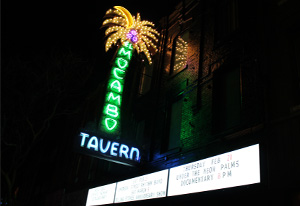 “I started knocking on the doors of sign companies and offered to deliver finished neon tubes to them, with a two-day turnaround,” he says. “They had never seen that level of service before. They used to have to pick up the tubes themselves from the neon shops!”
“I started knocking on the doors of sign companies and offered to deliver finished neon tubes to them, with a two-day turnaround,” he says. “They had never seen that level of service before. They used to have to pick up the tubes themselves from the neon shops!”
With this competitive advantage, Hope Neon’s customer base grew quickly. In 1986, the shop moved with Steel Art Signs to nearby Markham, Ont. Farrell moved the business again to the site of its biggest customer, Smith Signs, also in Markham, before eventually finding his own dedicated 204-m2 (2,200-sf) industrial space in adjacent Scarborough, Ont., in 1999.
“With our growth, we gained two to three people each year,” he says. “We ended up with 17 full-time employees working both day and night shifts and two vans on the road all of the time for deliveries. We were making neon tubing for illuminated signs—mostly channel letters—for every Tim Hortons, Ford dealership, Canadian Tire and Burger King across Canada. That was because we had enough guys. As we got more staff, we became the only ones who could handle these big projects.”
The timing of Hope Neon’s expansion under Farrell also fortunately coincided with a period of major growth for retailers and other commercial enterprises. The West Edmonton Mall, for example, had opened in 1981 and been expanded in 1983, 1985 and 1999, housing more stores and their signs as it became the largest mall in North America.
“A lot of big national chains used the big sign companies here in Toronto, like Pattison Sign Group, which were our customers,” Farrell explains. “Even when we used all of the space in our shop, it was very crammed and crowded here.”
Surviving the LED era
In 2002, light-emitting diodes (LEDs) began to emerge as an alternative to neon illumination of channel letters and box signs.
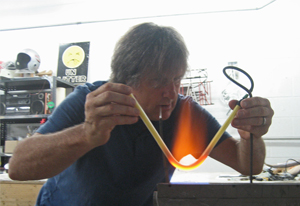 “At the beginning, they were very expensive and burned out quickly, but their development and acceptance accelerated,” says Farrell. “Before, sign companies could upsell neon because it was high-voltage and had to be handled by skilled installers. With LEDs, though, practically anyone can install them.”
“At the beginning, they were very expensive and burned out quickly, but their development and acceptance accelerated,” says Farrell. “Before, sign companies could upsell neon because it was high-voltage and had to be handled by skilled installers. With LEDs, though, practically anyone can install them.”
As the sign industry moved toward LEDs and their lower labour requirements over the ensuing years, Hope Neon had to lay off staff—to the point where today, Farrell is the only one left and he has subleased the back half of his shop to an engineering firm. Hope Neon is again a one-man shop, as at its inception, with Farrell turning to outside installers only when a large project requires a crane.
“There were quite a few years where we didn’t make money,” he says. “We kept downsizing and I had to hang in. I started to focus on exposed neon, which had always been out there, but was a market we hadn’t really served before. At the height of our business with neon in channel letters and sign boxes, I would say exposed neon had only accounted for about five per cent of our sales.”
Again, the timing was right for a business transition. Restaurateurs seeking a retro look turned to artists like Farrell, both to refurbish old signs and to make new ones look aged. Skeletal neon installed directly on indoor brick walls became very trendy. Classic-style signs were commissioned for TV commercials and series. And exposed neon even became ‘in’ for branding corporate reception rooms.
“I also have a lot of artists coming to me with sketches,” says Farrell. “I redo their art in neon and then they take it on to gallery shows. And before Christmas every year, I get orders for personalized neon signs as gifts from women to their husbands for their ‘man caves.’”
Ironically, the widespread adoption of LEDs for signage has indirectly helped keep Hope Neon in business by providing alternatives.
“A lot of people don’t like those signs where LEDs are used to mimic exposed neon,” says Farrell. “Neon has more of a classic look and offers a wider range of brilliant colours. Also, customers are starting to understand the question of energy efficiency is overrated. If you want the same light output, the difference in electrical consumption is minimal; LEDs are about 10 to 15 per cent more efficient, which for the size of projects I work on is pennies per month. So while it’s nice that exposed neon is the ‘in’ style again, I think the demand will always be there. And when the economy slows down, retailers will still want neon in their windows to attract customers.
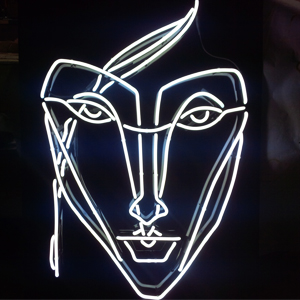 [3]A neon renaissance
[3]A neon renaissance
The aforementioned El Mocambo sign restoration was a milestone for the new, leaner Hope Neon, as it provided a solid reference and led to other projects.
In 2013, Farrell restored a series of outdoor exposed neon signs for The Music Hall, another storied concert venue on Toronto’s Danforth Avenue. He worked on a 1950s look for Coasters, a nostalgia-themed diner at Canada’s Wonderland, an amusement park just north of the city in Vaughan, Ont. His neon lettering can be seen on the inside walls of several Mexican restaurants in downtown Toronto, including La Carnita and Playa Cabana, and outside Chinese restaurant Dai Lo. And he continues to work for Grosso’s Cadillac Lounge.
“I’ve repaired their exterior signage again and again,” he explains, “and I’m going to redo it soon. With a lot of old signs, they can be rewired so there’s less strain and less electrical arcing.”
West Queen West has also led Farrell farther afield. The Drake Hotel, credited with spurring Parkdale’s commercial renaissance as an entertainment district when it was renovated and reopened in 2004, recently expanded its business with the opening of The Drake Devonshire, a more bucolic location in Wellington, Ont., on September 15.
“I built a sign for them that says ‘no vacancy’ and then, when some of the letters blink off, it says ‘vacay,’” Farrell laughs.
Wellington is about as far as he wants to reach, however.
“I don’t deal with long-distance shipping anymore, so all of my clients are local,” he says, explaining his marketing focus is on the Greater Toronto Area (GTA) and surrounding communities within Ontario, but no longer Canada-wide.
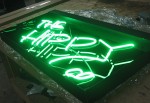 A craft without competition
A craft without competition
All of Hope Neon’s jobs today are one-offs, allowing Farrell to focus on each as it comes through his shop.
“Every day is so different now,” he says. “Sometimes I’m doing a site check. Other days, I’m in the shop working on layouts and blowing glass. And I have no set hours, whereas before the shop was like a factory. I love it. I don’t make as much money as I used to, but I totally enjoy it now.”
Clients continue to find him through word of mouth, partly because Hope Neon has been in business for so long, but also because neon artists like Farrell—who now has 30 years’ experience—have become very rare, so he faces little competition within his niche market.
“There’s only a few of us left now and I still have a good reputation,” he says. “I can do everything from design to glass-blowing to electrical installation myself, whereas other companies don’t go right from beginning to end.”
So, while the sign industry at large has benefited from a major shift toward LEDs as a standard illumination technology, Hope Neon succeeds by staying more or less the same.
“The hand-crafted art of glass bending and the equipment haven’t changed much over the years,” Farrell says. “There have been some changes in the neon gas process equipment, glass colours and layout design by computer, but overall, a neon shop in the present isn’t much different from one in the past. I wonder if Rudy would have bet his start-up, one-man shop would still be producing neon signs more than 50 years later?”
- [Image]: http://www.signmedia.ca/wp-content/uploads/2014/10/edit11.jpg
- [Image]: http://www.signmedia.ca/wp-content/uploads/2014/10/edit7.jpg
- [Image]: http://www.signmedia.ca/wp-content/uploads/2014/10/edit5.jpg
Source URL: https://www.signmedia.ca/sign-shop-profile-hope-neon/